There is noise everywhere. There is street noise which turns into neighborhood noise. We have children on bicycles playing in the neighborhood followed by dogs barking. Have you ever had that dog next door that barks all evening? Either the owners are gone or they are heavy sleepers but you are awake. There are the morning garbage trucks that set off the motion sensors in car alarms. Delivery trucks run down our streets and they can be at all hours. Sirens from emergency vehicles fill the night and early mornings. Hopefully, we have neighbors that do not add to the total noise equation. With all of this noise soundproofing a bedroom becomes an issue We must unpack this problem step by step in order to achieve an acceptable solution. There is no “room” for error.

Collect Frequency Data
Our first step is to figure out what type of noise we are dealing with. All noise is different and it comes in different quantities. We must first know the amplitude or strength of the noise. This is measured in decibels or dB. The next thing we must know is the frequency of the noise. All noise falls with a certain frequency range. We must identify what the frequency of the noise is and how strong it is. In order to obtain these two valuable numbers, we must measure the noise with our phones.
- Recording Positioning Diagram
- Data Recording Sheet for RTA Pro App
There are noise apps you can use to identify the frequency and amplitude of all noise. You use those apps in conjunction with the microphone on your phone. We must measure the noise over a seven day period. We must measure during the quiet part of each day and the noisest part of each day. This gives us a minimum and maximums for each day. With these numbers, we know the quietest and loudest part of each day. If we design a fix for the loudest part of the day, the quietest part will be covered.
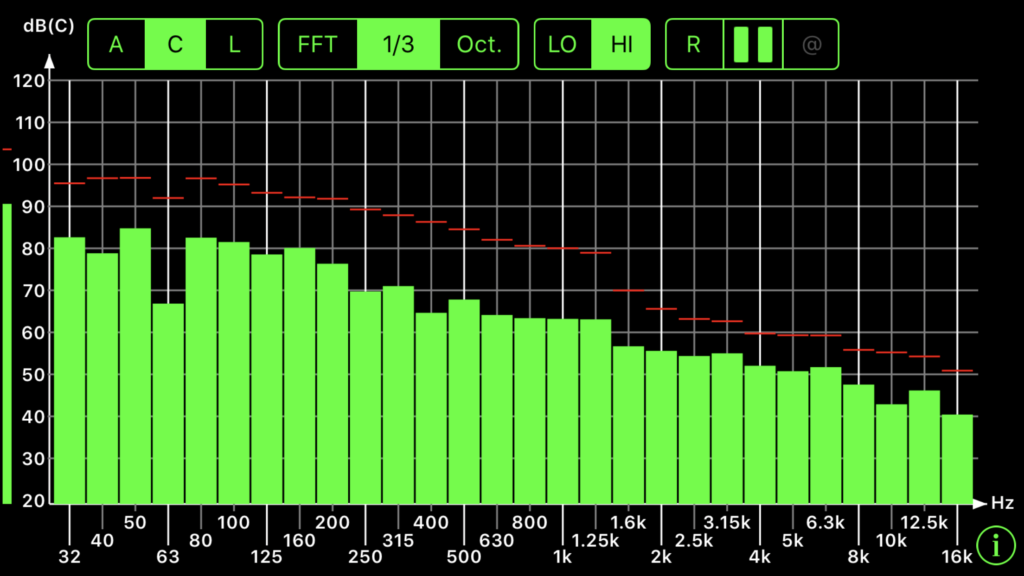
RTA Graph from iphone software
Barrier Technology
Soundproofing a bedroom depends on these numbers. The reason for this is that the barrier technology you must build to block the noise is built differently for each noise. A barrier is a structure you build between the noise source and your bedroom. The barrier you build is designed from the noise measurements that you take during the week over the seven days. If the noise source is the neighborhood noise and we measure during the day and night we will see different numbers. These numbers tell us what kind of barrier we are going to have to build. The difference between the minimum noise levels and the maximum noise levels determine what materials we are going to use, how many of those materials we will need and how to arrange those materials together to produce a proper barrier that will work for your specific noise.
- Middle & High Frequency Barrier
- Low-Frequency Barrier
Treating Different Frequencies
If we measure the noise in the neighborhood and the frequencies are low and the strength or amplitudes are large, we will need to build a thicker wall with more materials. What materials we use and how thick depends directly on the noise and how powerful it is. What produces low-frequency noise? Garbage trucks and semi-trucks produce lower frequency noise. Equipment running from repair crews produce low-frequency noise. Low-frequency noise is long waves of energy. A 30 Hz. low-frequency, wave which is a common wave with garbage trucks are 37′ long and go through everything. They go through glass and windows. The waves go through walls and doors. These waves are difficult to stop. Even a concrete wall will not stop these monsters. Middle and higher frequency noise are different. Its the kids yelling at each other as they ride their bikes. It is the bell ringer on the bikes themselves. A barbecue next door is middle and high-frequency noise unless they are playing dance music then it becomes a low-frequency noise issue.
Soundproofing a Bedroom Based on Data
Once we have our noise issues quantified and qualified, we must then start the design process. We will decide what materials to use and how to construct them. If we have low-frequency noise, we will build a barrier wall that is made one way. We will use certain material types and construct them in a certain way based directly upon the noise numbers taken. If we just have middle and high-frequency noise then we will build it another way. This particular material and construction methodology will be based upon the actual noise numbers. This is what it is so important to measure the noise first and foremost since the strength and frequency of the noise determines what wall construction type and method we use, we must know which direction to go. If you apply the incorrect amount of materials and construct them in the wrong way, you may have to tear it all out when it does not work. You may also not be able to fix what you have done. Mistakes take up valuable space time and money. Guessing with noise is a fool’s game. I guess wrong with noise on occasion after 43 years of building barriers. What chance do you have without measurements to quantify and qualify all frequency and amplitude issues.
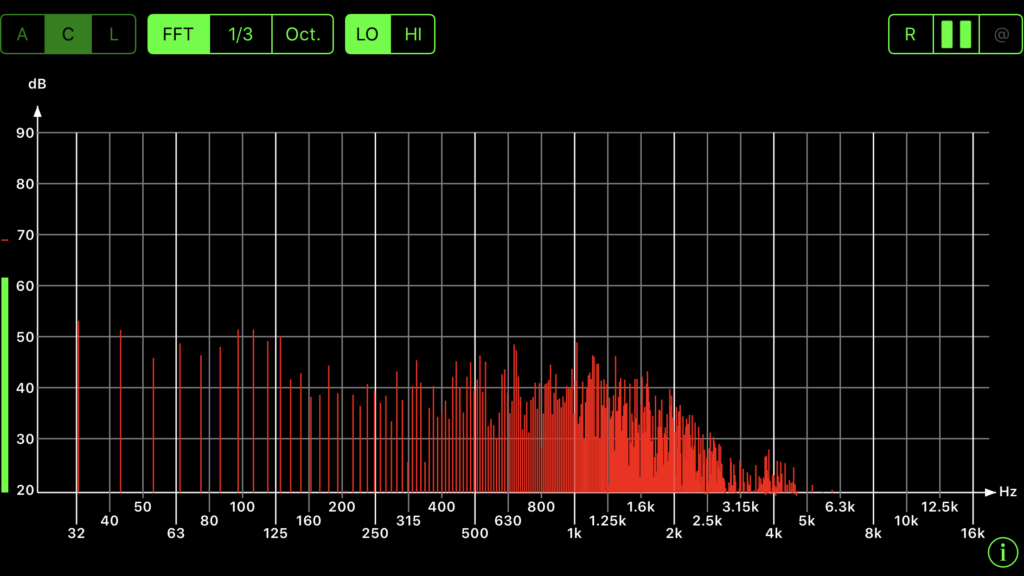
FTT Graph from iPhone software
Where to Start Soundproofing With Our Technology
Soundproofing a bedroom must follow the same steps as we have described for a new build. First, you must measure the neighborhood noise. This can be done easily with your cell phone. We provide the apps and the datasheet to record the frequency and amplitude on. You must take measurements over seven days. Then you must measure during the quietest times each day and then the noisiest times of each day. After that you then send the data to us and we design the barrier (wall) technology that you will build per our drawings. All of our designs use standard construction materials and construction methodologies. Any licensed contractor can build our design. Of course, we are available for consultation during the construction process. Yes, it is a new room within a room that you will be building in your bedroom. You must create a new environment that is designed to attenuate or reduce noise transmission from the neighborhood at all hours of the day or night. This can only be accomplished by building a new room within a room. This is the only way to take all the frequency and amplitude noise issues out of how to soundproof a bedroom.
Soundproofing a room: Measure Once Build Once
There are no panels, foam, drapes or any other add on material that will treat noise issues in your bedroom. Sound is like water. It will find the weakest link and pass-through this area. You must think of your room as a boat. It will be placed in a sea of noise and it must not leak. Any weakness in design will cause a leak and sink the boat. A common misconception is that sound absorption panels made from foam or building insulation will stop the noise. Nothing could be further from the truth. Sound absorption and barrier (noise) treatments are entirely different sciences with completely different physics. The treatment types, amounts, and positions of the treatments are entirely different. There are no short cuts with noise. Noise impacts different people differently. What bothers some does not bother others. Unfortunately, noise is so ever-present today we must measure it and then build our “vessel” to stop its progress through our room. The problem is soundproofing a bedroom. The solution is to measure once and build once. A 100% right approach with a 100% fix.
For any additional information regarding this topic or others relating to room acoustics, please contact us directly at:
P: 520 – 392 – 9486
info@acousticfields.com


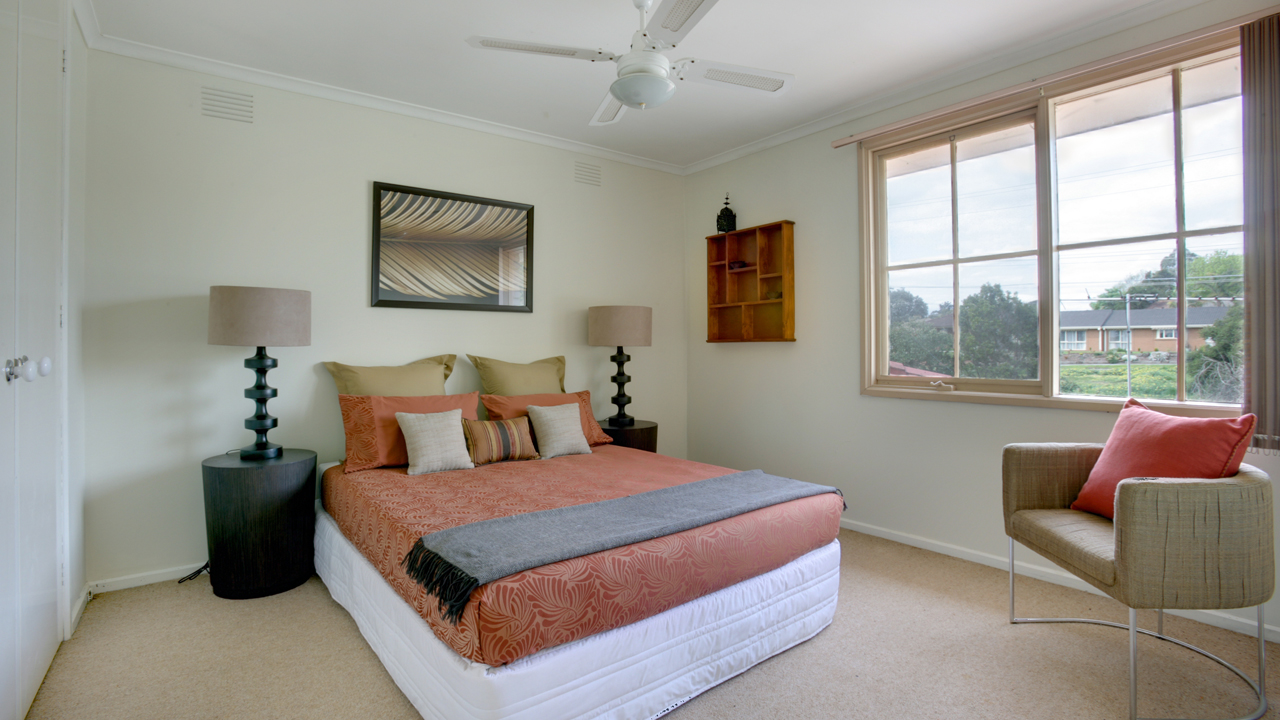
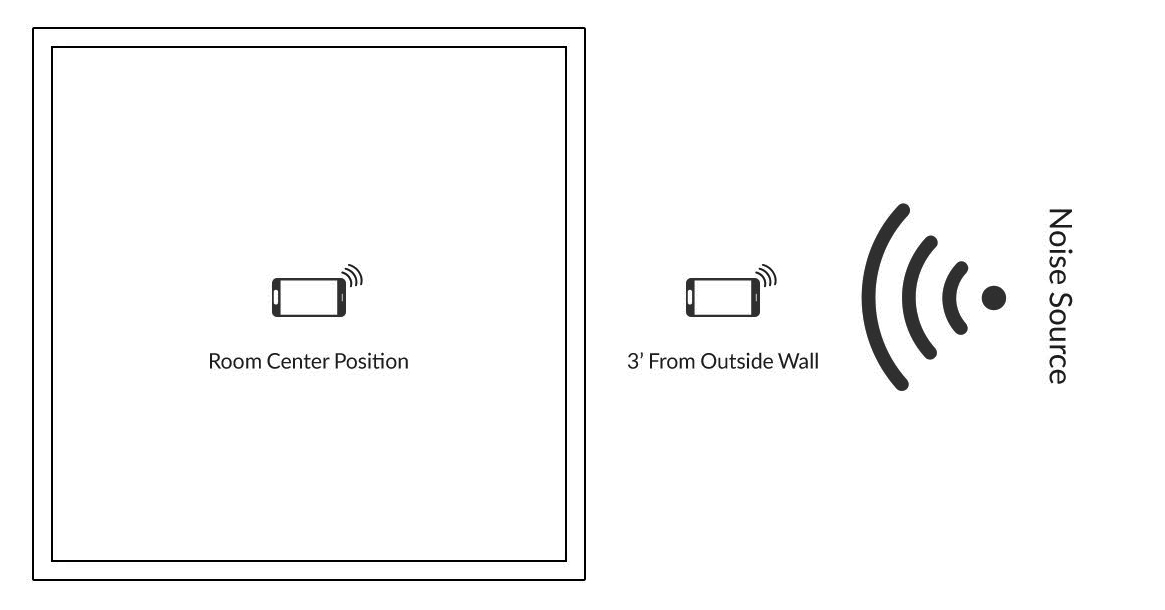

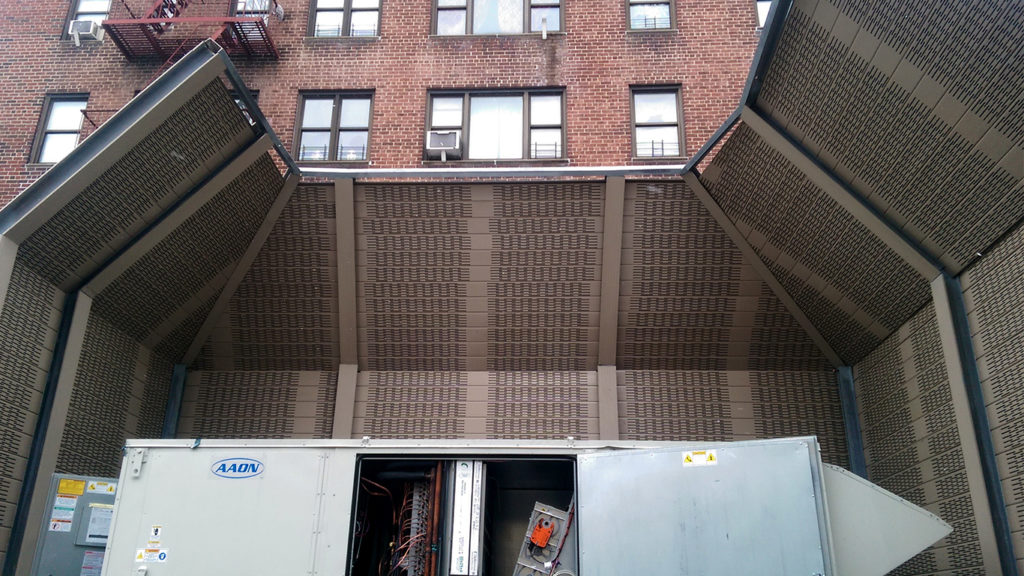
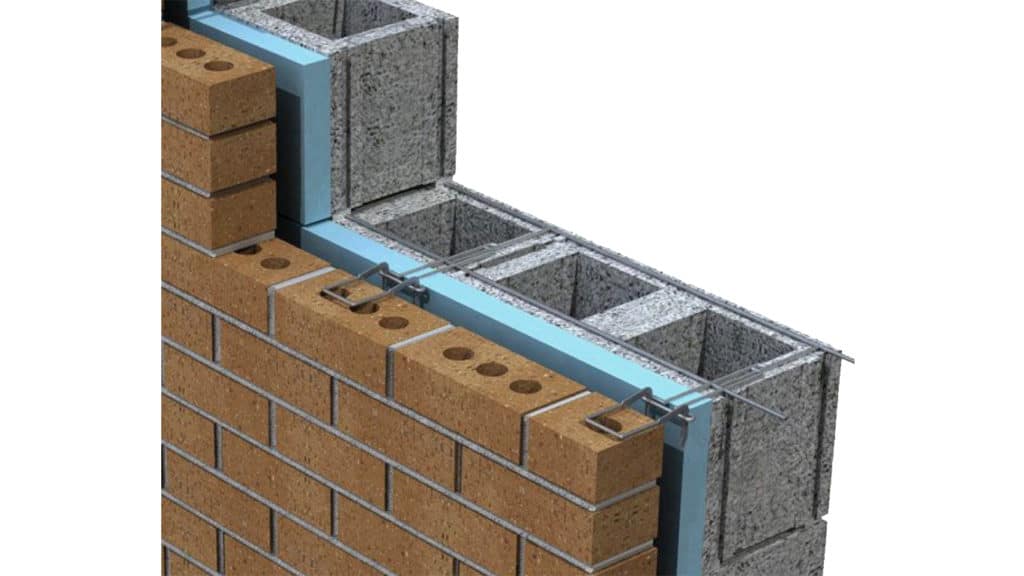





Whether for avoiding incoming noise, preventing outgoing sound, or desiring a more “perfect” acoustic environment, the largest problem I see is that a desire to retrofit a space is generally the greater, if not the only, possibility and that space tends to be the one we live in. Eliminating windows is simply a non-starter.
As much as I desire a more perfect acoustic environment I have accepted the fact that the tradeoffs are far too many.
D, Yes, you are correct. There are many tradeoffs when it comes to noise. Everyone’s tolerance for certain frequencies and amplitudes is also different.